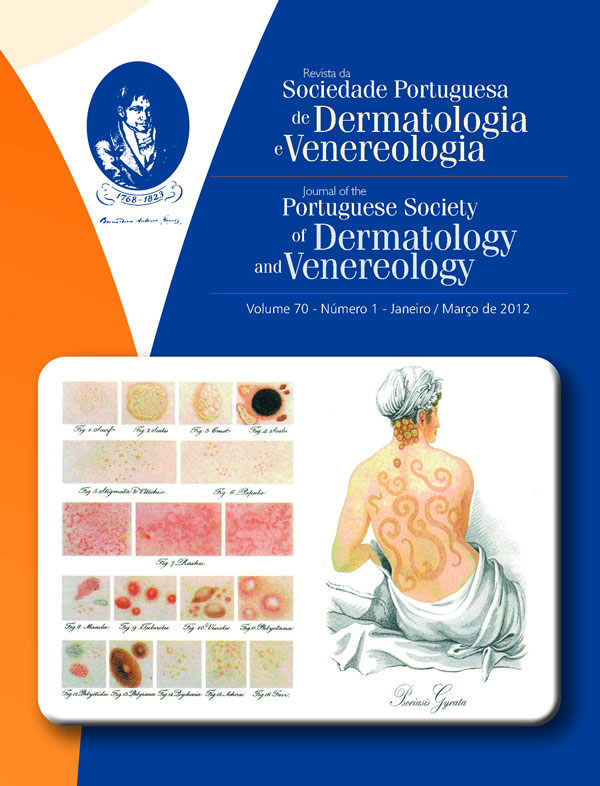DERMATOSES IN PREGNANT AND POSTPARTUM WOMEN ATTENDING AN EMERGENCY DEPARTMENT – A STUDY OF 86 PATIENTS
Abstract
Introduction: Besides morbidity related to skin lesions and pruritus, dermatologic disorders during preg- nancy cause psychological concern and some of them carry a fetal risk.
Objective: Assessment of the type, frequency and clinical characteristics of the dermatoses seen in pregnant and postpartum women seeking support from the Emer- gency Department.
Methods: Retrospective study of pregnant and postpartum women observed by dermatologists at the Emergency Department between September 2006 and September 2010.
Results: The study included 79 pregnant and 7 postpartum women, with a median age of 33 years. Specific dermatoses of pregnancy were diagnosed in 42 patients (48.8%). Polymorphic eruption of pregnancy was the most frequent specific dermatosis (n=16), followed by eczema in pregnancy (n=12), prurigo of pregnancy (n=8), pemphigoid gestationis (n=5), and pruritic foliculitis of pregnancy (n=1). Other dermatoses were diagnosed in 44 patients (51.2%), including: pityriasis rosea (n=11), infections and infestations, dyshidrotic eczema, contact dermatitis, lupus erythematosus and acute generalized exanthe- matous pustulosis. In the cases with an atypical presentation, the biopsy helped in the characterization of the disease. The fetal outcome was assessed in 43 cases, only 3 cases of preterm delivery being registered.
Discussion: The onset of the specific dermatoses of pregnancy was more likely to occur in the late pregnancy, especially the third trimester. In pregnant women with exuberant or atypical skin lesions, laboratory and histological study are indispensable for the specific diagnosis, allowing appropriate therapeutic approach and fetal risk assessment.
KEYWORDS – Skin Diseases; Pregnancy Complications; Pruritus.
Downloads
All articles in this journal are Open Access under the Creative Commons Attribution-NonCommercial 4.0 International License (CC BY-NC 4.0).








